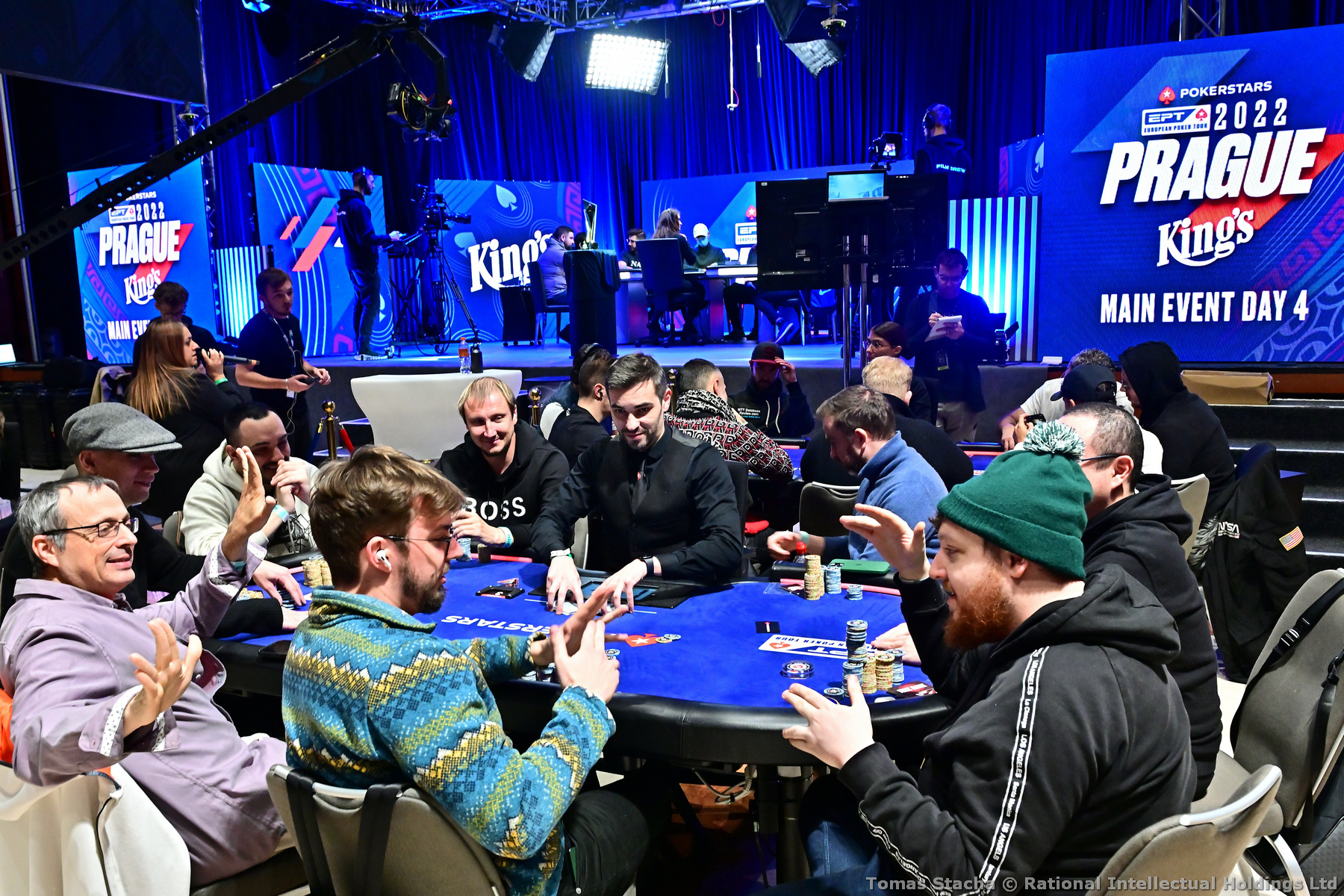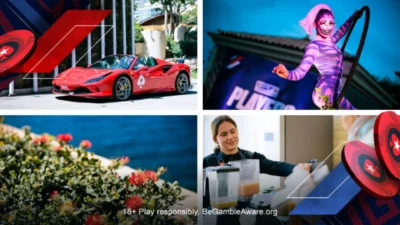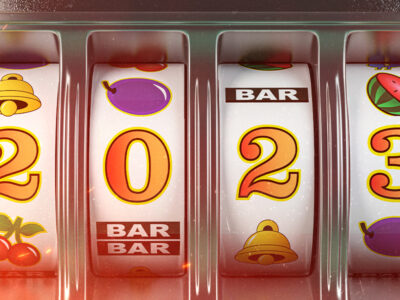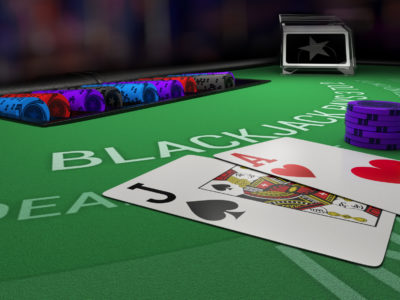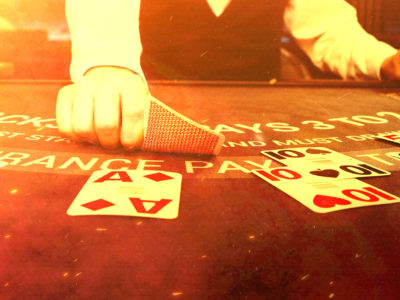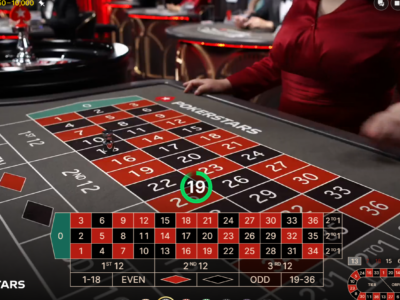The schedule at EPT Prague is unusual. As we’ve discussed before, tournament organisers are keen to get the Main Event wrapped up before the World Cup final starts, and that means squeezing a six-day tournament into something shorter.
But how long does an EPT Main Event usually last? That’s the first question we need to answer before trying to figure out how to start cramming.
BIG BLINDS AND CHIPS IN PLAY
Everyone in and around the tournament room has their own formula — we mean players, tournament staff and reporters — but it tends to boil down to the same thing.
You first need to know how many chips there are in play, and then compare that with the big blind at various stages of the tournament. Most poker tournaments end when there are between 50 and 100 big blinds in play — i.e., remaining players have only that number of big blinds between all of them — so you need to look at the schedule, determine in what level there will be 50 to 100 big blinds in play, and you can then expect the tournament to end, or be close to ending, in that level.
Let’s look at this in practice.
The chart below shows the past five years of main events on the European Poker Tour (officially the PokerStars Championship in 2017).
The starting stack in all of these tournaments was 30,000, so the chips in play calculation is always Entries x 30,000. The structure has stayed consistent since then too, so we know what the big blind is in the various tournament levels.
WHAT’S THE HISTORY?
Thanks to Poker News’ live updates archive, we can see what level these various tournaments ended in. And with all this information, we can see how many big blinds were in play at the conclusion of all these events.
The deepest a tournament has ever been was 176 big blinds at it conclusion, when Aliaksei Boika beat Mats Karlsson heads up to win EPT Malta in 2016. The shallowest it has ever been was PokerStars Championship Barcelona in 2017, when there were only 32 big blinds in play at the end.
The average number of big blinds in play over these 23 tournaments is 111. It means that for EPT Main Events, we can usually expect a conclusion in the level where there are 100 big blinds in play.
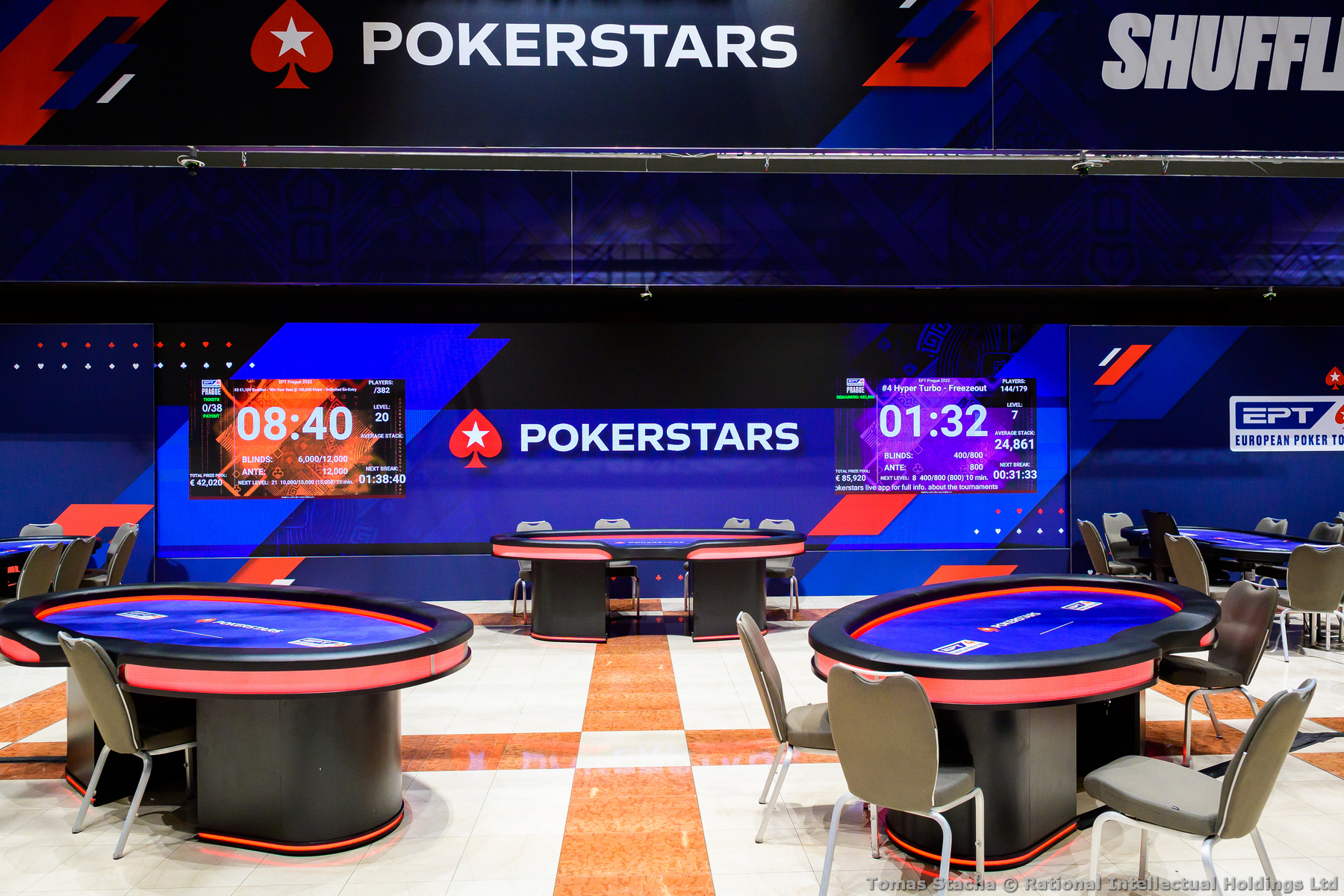
The tournament clocks tick down to the inevitable
Here in Prague, the record breaking field sits at 1,267 entries, which means there are 38,010,000 chips in play. (Let’s just call this 38 million.) If we reverse engineer, we can see that there will be 100 big blinds in play when the big blind is 380,000.
Looking at the EPT Main Event schedule, the big blind will be 300,000 in Level 34. In Level 35, it goes up to 400,000. So, in theory, we should be looking at a conclusion at around about Level 35.
NOT A PRECISE SCIENCE
Now, this is far from a precise science. There are a great many things that can affect this kind of calculation. It’s only ever a loose guide. And people who have been around the EPT long enough know it’s wise to err on the side of caution.
“I always look at the most pessimistic end,” said James Hartigan, EPT commentator, and the man charged with figuring out the streaming schedule for these events. “But there does come a time when you know it simply can’t go on any longer.”
Hartigan works on the assumption that the average stack in a tournament is usually 50 big blinds throughout. (This is also the approach favoured by many tournament directors, including Mike Ward who previously gave us a very detailed opinion on this subject.)
You can broadly track how many players should still be in the tournament at any given stage by using this information and comparing it with the blinds. For instance, at start of play today, in Level 23, the big blind was 25,000 and so a stack of 50 big blinds would be 1.25 million.
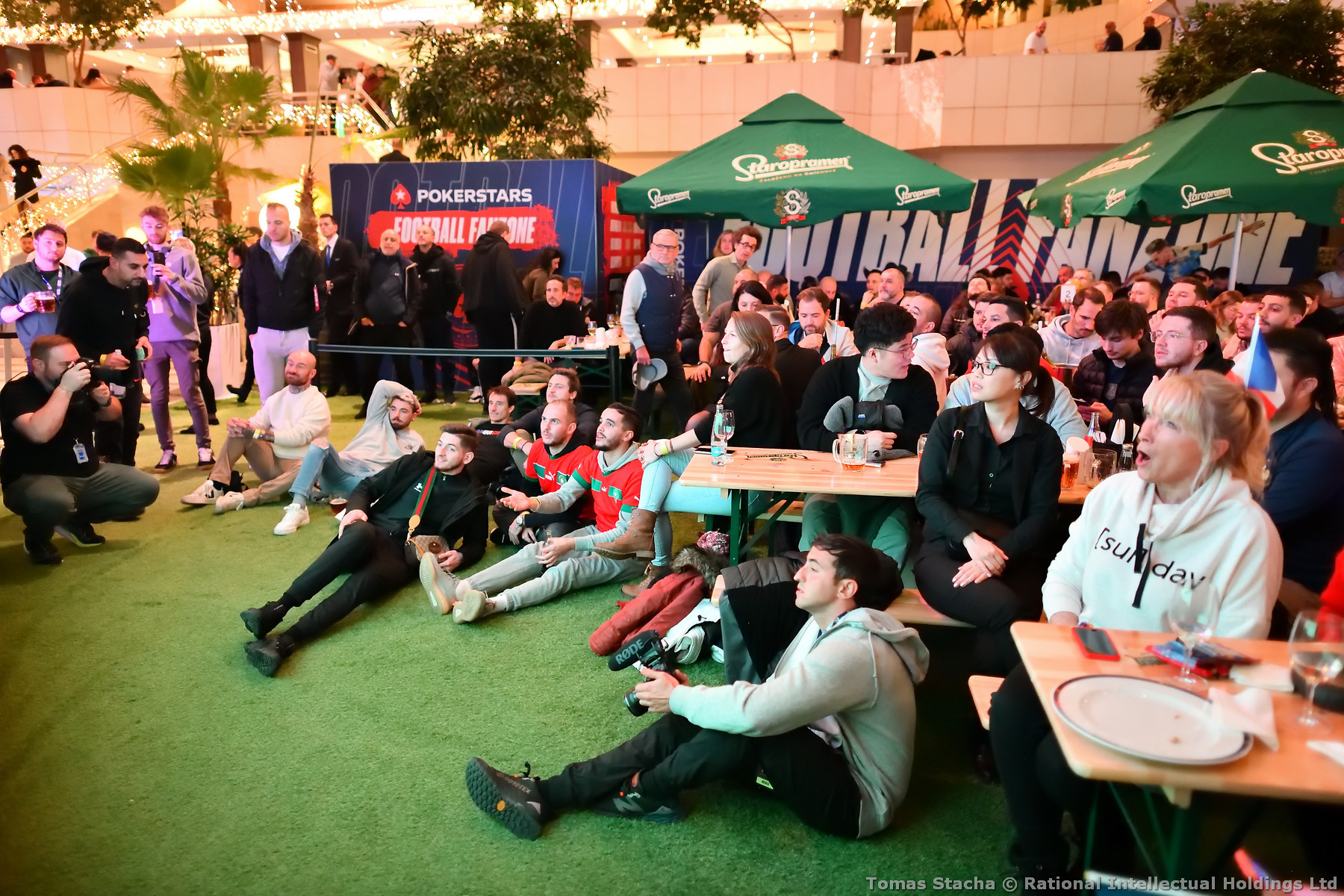
The idea is to be done in time to watch the match in the Fanzone
With 30 million chips in play, that would mean 24 players still left. We actually had 30 at the beginning of the level and 25 at the end, so that’s a pretty accurate guide. Things change a little at the final table, which is where the big blind calculation comes in, and you then have to factor in a slight slowdown in play as the pressure becomes more intense.
Hartigan says he thinks it will be done in Level 36 or 37, but admits to an abundance of caution.
DISRUPTING FACTORS
What can change the calculations?
A strange heads-up
One of the main disrupting factors to all these calculations is heads up play. Some heads up battles last forever, with players either playing with excessive caution, or the tournament simply reaching the heads up stage too quickly, leaving the last two players incredibly deep.
For instance, at the PokerStars Championship in Macau in 2017, the field of 536 was reduced to its final two of Elliot Smith and Terry Tang in super-quick time. But the pair then played a 10 and a half hour marathon heads-up battle — and there was never a double up. They had huge stacks and simply small-balled it for hours on end.
By contrast, Boika’s victory in Malta, referenced above as the tournament that ended with the deepest chip stacks, finished so abruptly because Karlsson, by his own admission, hated heads up play. He wanted to play big pots and get it done quickly, so made a massive bluff that got picked off.
Sometimes weird heads-up means a quick finish, sometimes a long one.
A single player’s rampage
The quickest way to ensure a speedy final day is for a dominant chip leader to go on an unstoppable rampage. Here in Prague in 2014, Stephen Graner came to the final table as a runaway chip leader, and he knocked out every single opponent on the last day. Despite there being 1,107 entries, the tournament ended in Level 32, with a 160,000 big blind, and 208 big blinds in play. It was still daylight when the tournament concluded. https://www.pokerstars.com
By contrast, if a short stacked player gradually mounts a comeback and climbs slowly up a leader board, that can result in a long day.
WHAT DOES IT MEAN FOR THIS WEEK?
At time of writing, the EPT Prague Main Event is in Level 25, with 16 players left. The plan is to play either six levels today, or down to nine players, whichever comes soonest. (The day began in Level 23.)
Let’s say we play the full six levels. That means we’re going to play until the end of Level 30. It will mean a probable five to six levels still to play, and two days to do it.
Conclusion: even with the much truncated final day, when we want to be finished by 4pm, we should be comfortable. It’s been a slog to get to this point, but days should be getting much shorter from now on.
Back to TopView Other Blogs

